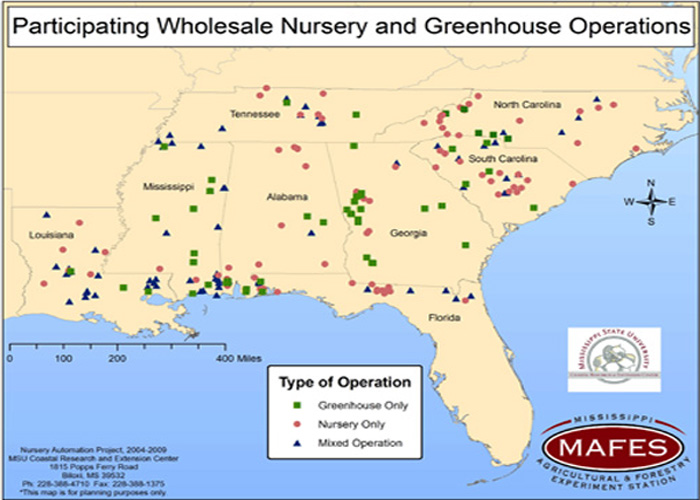A regional socioeconomic survey of randomly selected wholesale nurseries and greenhouses was conducted in eight selected southern U.S. states as a part of a research program undertaken by the Mississippi Agricultural and Forestry Experiment Station and the U.S. Department of Labor entitled “Enhancing Labor Performance of the Green Industry in the Gulf South.” The socioeconomic survey consisted of eight parts: workers’ demographic characteristics, nursery characteristics, nursery automation, greenhouse automation, labor and capital markets, pesticide and chemicals, working conditions, and respondents’ characteristics (Posadas et al., 2004). The overall goals of the regional socioeconomic survey were to develop a socioeconomic profile of horticulture workers and to evaluate the impact of automation on their employment, earnings, safety, skill-levels, and retention rates.

Using a socioeconomic database collected by face-to-face interviews of nurseries and greenhouses, empirical models were estimated to measure the economic impacts of mechanization or automation on annual gross sales, annual employment, and workers earnings, safety and retention. The survey was conducted among 215 randomly selected wholesale nurseries and greenhouses located in eight southern states from Dec. 2003 to Nov. 2009.
The horticulture publications and presentations of Dr. Posadas are listed in http://coastal.msstate.edu/ben-publications and http://coastal.msstate.edu/horticulture-presentations.
